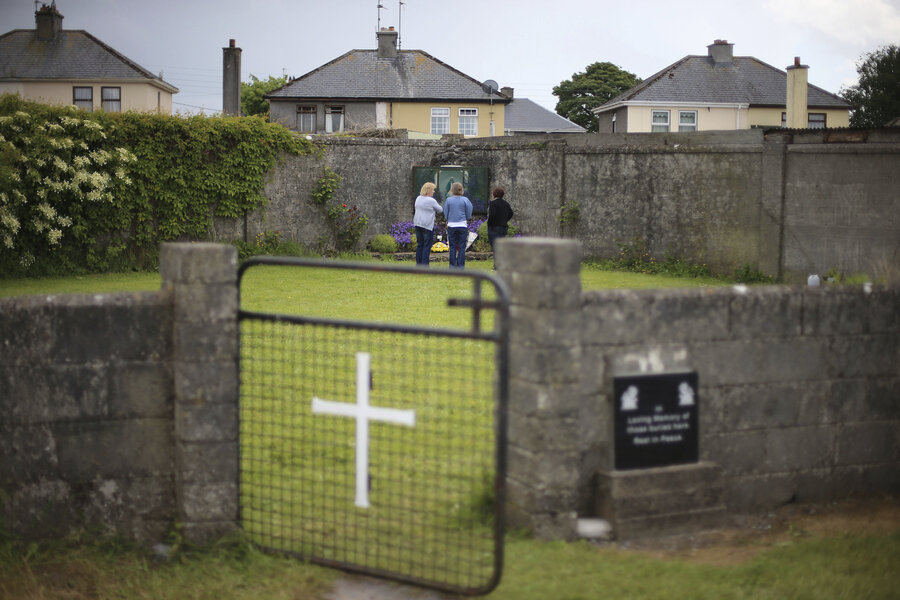Why an orphanage’s 'mass grave’ controversy strikes such a chord in Ireland
Loading...
Government investigators in Ireland said on Friday they had uncovered the remains of babies and children buried in a network of 20 underground chambers at a former Catholic orphanage, appearing to confirm long-held suspicions of mass burials at the church-run facility during the 1950s.
Three months of excavations had already turned up “significant quantities of human remains” of children between 35 weeks and 3 years old at the site, said the judge-led Mothers and Babies Commission.
Ireland's Minister for Children and Youth Affairs, Katherine Zappone, called the findings “sad and disturbing.” She said a proper burial and other memorials would be offered to any surviving relatives of the children.
"We will honor their memory and make sure that we take the right actions now to treat their remains appropriately," Ms. Zappone said.
The shocking discovery ties into a larger movement that has sought to reckon with past abuses committed at Catholic orphanages and schools, in the decades following a growing secularization – and economic renaissance – in Irish society.
Perhaps the most comprehensive effort emerging from that movement was the 2009 "Ryan Report” published by Ireland’s Commission into Child Abuse, after almost a decade of investigation and interviews with some 2,000 witnesses and religious representatives. The report implicated more than 800 priests, nuns, and brothers at dozens of orphanages and other institutions for children, as The Christian Science Monitor’s Michael Seaver reported then:
The report found that sexual abuse was “endemic” in boys’ institutions, and throughout the system children were “frequently hungry” and “lived with the daily terror of not knowing where the next beating was coming from.” The investigation spanned incidents from the 1930s to the 1990s. Many of the institutions have since closed. The government has vowed to increase unannounced inspections of those still open.
Some smaller-scale efforts have been led by Church faithful: in 2014, the Monitor profiled an initiative led by Philomena Lee, who was forced to give up her baby for adoption by the Church after becoming pregnant out of wedlock some 60 years ago. Ms. Lee’s initiative, helped by the publicity she got from the film telling her story, pressured the Vatican and the Irish government to release files that would allow an estimated 60,000 Irish women track down children delivered under similar circumstances.
The home at the heart of the current scandal, run by the Sisters of Bon Secours, would take in unwed pregnant women, then raise the children apart from their mothers in the home until they could be put up for adoption, reports the Guardian. One of a dozen such facilities that operated in Ireland in the 1950s, the home closed in 1961.
Suspicions of mass graves at the site got their start in 2014 when a local historian, Catherine Corless, tracked down some 800 death certificates for children residing at the orphanage, but only one corresponding burial record.
In 1975, Ms. Corless found, two boys playing at the site of the former home fell into what had once been a septic tank and stumbled upon children’s skeletons there. She later obtained records from the county dating back to the 1970s, when the town council built an estate over an area marked on maps from the time as a “burial ground”, reported the Guardian in 2014.
The Irish government responded to her research by forming the Commission to investigate the treatment of children at 14 former shelters. But the new findings vindicate Corless's work and present the first hard evidence of such burials.
Corless called on the Bon Secours order to apologize for the unmarked burials and help organize proper graves for each of the dead children once the remains were identified.
"That's the least that can be done for them at this late stage,” she told the AP.
The sisters said in a statement that they had turned over all their records to state authorities in 1961 when the home closed, but they pledged to cooperate with the continuing investigation.
This report contains material from the Associated Press.








